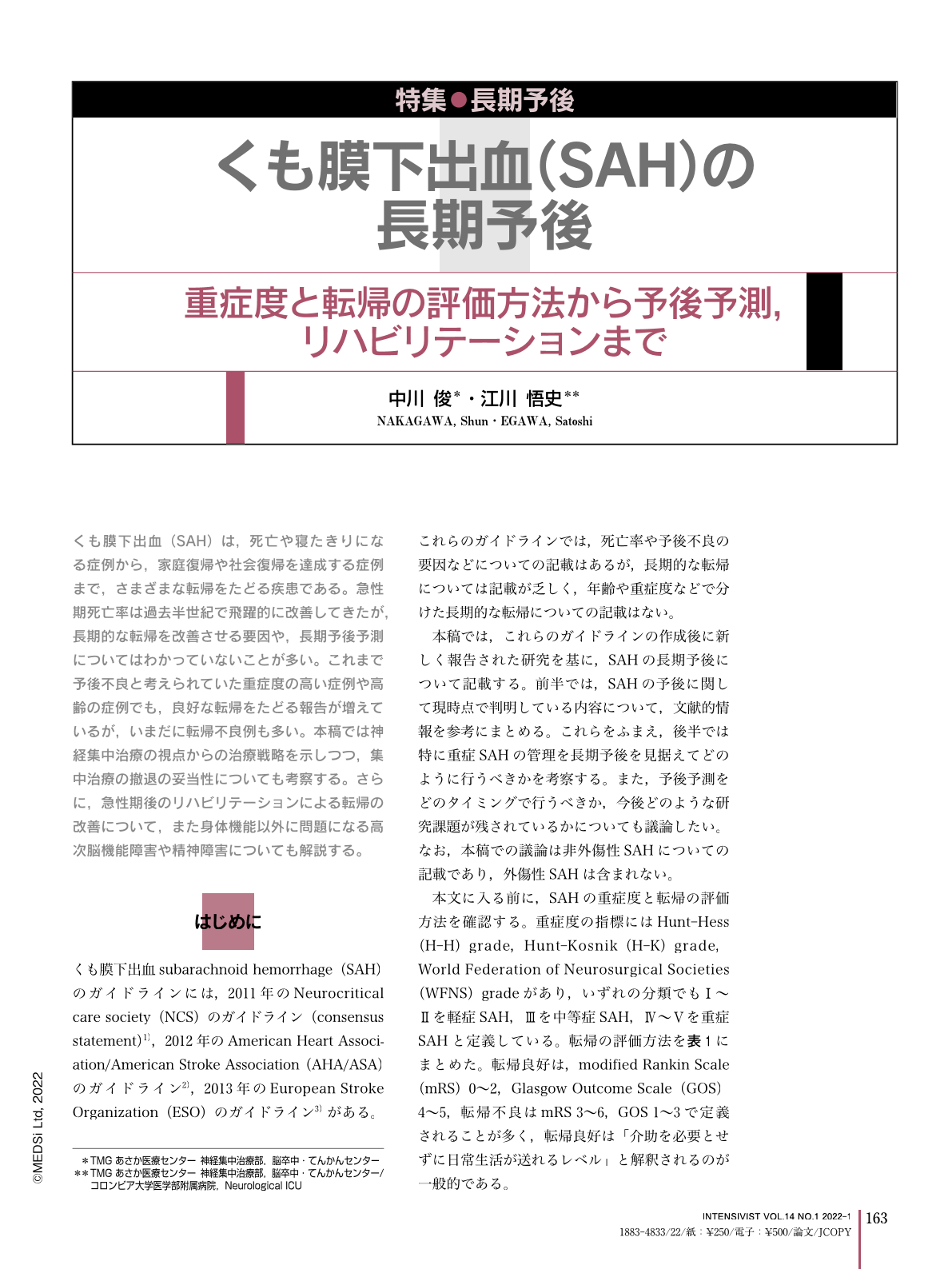Japanese
English
- 有料閲覧
- Abstract 文献概要
- 1ページ目 Look Inside
- 参考文献 Reference
くも膜下出血(SAH)は,死亡や寝たきりになる症例から,家庭復帰や社会復帰を達成する症例まで,さまざまな転帰をたどる疾患である。急性期死亡率は過去半世紀で飛躍的に改善してきたが,長期的な転帰を改善させる要因や,長期予後予測についてはわかっていないことが多い。これまで予後不良と考えられていた重症度の高い症例や高齢の症例でも,良好な転帰をたどる報告が増えているが,いまだに転帰不良例も多い。本稿では神経集中治療の視点からの治療戦略を示しつつ,集中治療の撤退の妥当性についても考察する。さらに,急性期後のリハビリテーションによる転帰の改善について,また身体機能以外に問題になる高次脳機能障害や精神障害についても解説する。
Subarachnoid hemorrhage is associated with a wide range of outcomes, from death to being bedridden to patients who achieve reintegration into their family and society. Although acute mortality rates have improved dramatically over the past half century, many factors that improve long-term outcomes and predict long-term outcomes are not known. We present a treatment strategy from the viewpoint of neurological intensive care, and discuss the appropriateness of withdrawal of intensive care. Furthermore, we discuss improvement of outcomes by rehabilitation after the acute phase, as well as problems of cognitive dysfunction and mental disorders in addition to those of physical dysfunction.

Copyright © 2022, MEDICAL SCIENCES INTERNATIONAL, LTD. All rights reserved.


